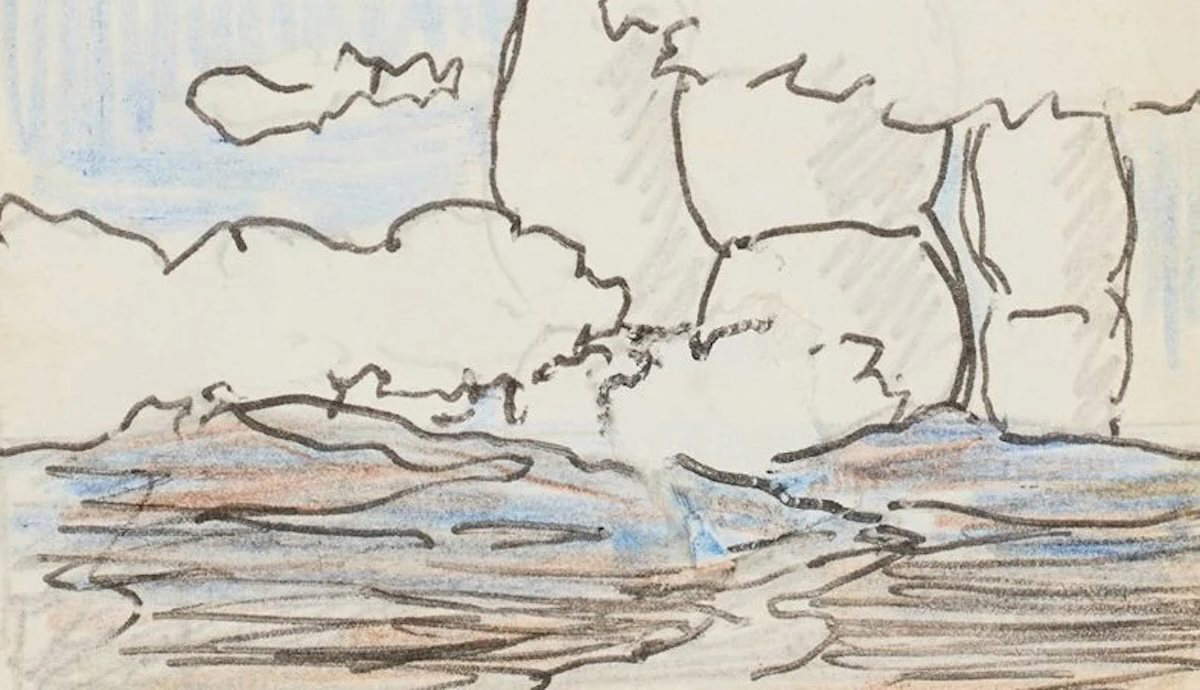
On Monday, two women painted the words “Me Too” across the protective glass covering Gustave Courbet’s L’Origine du monde (1866) at the Centre Pompidou-Metz. The protestors also chanted the phrase before being removed from the museum and arrested. The French-Luxembourgish artist Deborah de Robertis organized the protest as part of a performance piece titled Don’t Separate the Woman from the Artist.
The famously controversial Courbet nude is currently on loan to the Centre Pompidou-Metz from the Musée d’Orsay for a special exhibition. Four additional artworks in the exhibition were also marked with “Me Too,” and one—I Think Before I Suck by Annette Messager (1991)—was stolen. The missing work is now allegedly in de Robertis’s possession.
Deborah de Robertis and L’Origine du monde

Monday’s protest was not the first time Deborah de Robertis engaged with L’Origine du monde. In fact, among the targeted works at the Pompidou-Metz is one of de Robertis’s own: Mirror of the Origin of the World, a photograph of a 2014 performance wherein de Robertis exposed her vulva in front of L’Origine du monde at the Musée d’Orsay. Don’t Separate the Woman from the Artist coincides with the 10-year anniversary of de Robertis’s first interaction with the Gustave Courbet nude.
De Robertis explained that the purpose of the “Me Too” tags was to denounce predatory men in the art world and “challenge the history of art…because women are the origin of the world.” She also issued a call to action, saying, “I call on all women, with or without vulvas, all intersex, trans and non-binary people, and all underrepresented people—whether artists, assistants or interns in the art world—to dare to express yourself.”
Reactions to the Performance Art Protest

As in many cases of art vandalism, Monday’s performance art protest by Deborah de Robertis was widely condemned. “With all the respect we have for feminist movements, we are shocked to see the works of artists vandalized, particularly feminist artists, who are at the center of the struggles of art history,” said Chiara Parisi, director of the Centre Pompidou-Metz. The mayor of Metz, Francois Grosdidier, described the stunt as “a new attack on culture, this time by fanatic feminists.” Rachida Dati, France’s Minister of Culture, wrote on X, “An artwork is not a poster to color in with the day’s message.”
Deborah de Robertis’s performance art tends to incur public criticism—and often involves impromptu public nudity. In 2016, de Robertis posed nude at the Musée d’Orsay in front of Édouard Manet’s Olympia and was arrested for indecent exposure. She also incurred a fine in 2020 after appearing nude at a Catholic pilgrimage site in Lourdes, France.
Over 100 Years of Courbet Controversy

Gustave Courbet painted many nude figures in the 19th century, but L’Origine du monde was his most provocative. Courbet rejected the idealization of the human body in academic painting, which confined nudity to mythological and allegorical art. L’Origine du monde exemplifies Courbet’s radical dedication to Realism. It presents a closely-cropped and boldly unidealized vulva as the “origin of the world”—the physical location at which birth occurs. With its confrontational composition, harmonious color scheme, and physical realism, L’Origine du monde blurs the boundaries between art, anatomy, and pornography.
L’Origine du monde was commissioned in 1866 by a wealthy diplomat in Paris who compiled an eccentric collection of art that celebrated the female body. After changing hands a few times, it ended up in the hands of psychoanalyst Jacques Lacan in the 1950s. The painting finally made its public debut in 1988 as part of a Courbet retrospective at the Brooklyn Museum. After Lacan’s death in 1995, the work was gifted to the French state. It then joined the permanent collection of the Museé d’Orsay in Paris. While attitudes around artistic nudity have changed dramatically since 1866, L’Origine du monde still manages to shock viewers and trigger censorship today.










